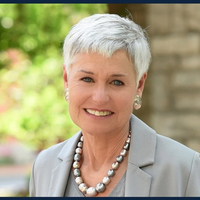 Jun 28th, 2023
Jun 28th, 2023Effective Communication for Students and the ADA
Schools have long known that students with hearing, vision and speech disabilities may need accommodations in school to receive a Free Appropriate Public Education under either the Individuals with Disabilities Education Act or Section 504 of the Rehabilitation Act of 1973, or both. The U.S. Supreme Court, in the case of Board of Education of the Hendrick Hudson Central School District v. Rowley, ruled in 1982 that the school had no obligation to provide the requested sign language interpreter for a hearing impaired student because the student was able to succeed in school with residual hearing and lip reading; the school’s obligation was only to provide services so that the student could benefit from education, not necessarily to reach her potential.
Since that time, Congress enacted Title II of the Americans with Disabilities Act (“ADA”), applicable to every student attending a public school. Like Section 504, it prohibits disability-based discrimination. The Regulations promulgated pursuant to Title II of the ADA require public schools to provide students with disabilities an equal opportunity to participate in all school activities AND to ensure, through the provision of “auxiliary aids and services,” that communication for students with disabilities is “as effective as” communication for students without disabilities. Unlike the IEP process, where the Committee on Special Education reaches consensus on the “supplementary aids and services” to be provided to the hearing, vision or speech impaired student, Title II of the ADA requires public schools to give “primary consideration” to the auxiliary aid or service requested by the student with a disability (or student’s parent on student’s behalf) when determining the appropriate auxiliary aid or service to provide. It may be, therefore, that an aid or service may be sufficient to provide a FAPE under the Rowley standard, but will be viewed to violate Title II of the ADA if primary consideration is not given to the student’s/parent’s preference.
The Title II regulation lists examples of auxiliary aids and services, but is not exhaustive. Specifically listed are qualified interpreters, note-takers, real-time computer-aided transcription services, assistive listening systems, accessible electronic and information technology, and open and closed captioning, Braille materials, text to voice and audio recordings, magnification software, and augmentative communication devices. The input of the student/parent should be solicited and the selection of the auxiliary aid or service determined on an individualized basis depending on the nature, duration and complexity of the communication. The obligation applies to all aspects of a student’s educational experience, not solely to academics.
The U.S. Department of Justice, charged with enforcing the ADA, together with the U.S. Department of Education have opined that “[t]he public school must honor the choice of the student with the disability (or appropriate family member) unless the public school can prove that an alternative auxiliary aid or service provides communication that is as effective as that provided to students without disabilities.”
For students with speech, hearing and vision impairments, the CSE and/or Section 504 team will need to modify its evaluation of “appropriate” communication device or support. It is unlikely that the Hendrick Hudson School District would have prevailed in the Rowley case had Title II of the ADA been in existence and the claim made under that law instead of the IDEA. Moreover, the ADA requires these services so that the public school does not discriminate on the basis of disability – the prohibition on such discrimination is not held in abeyance while the CSE process unfolds. The Title II auxiliary aid and service may not wait until the CSE evaluation and meeting process. Similarly, students/parents may revise their preferred auxiliary aid and service outside of the CSE process, and such revised preference must be considered.
The rules regarding special education have always been complex. Title II of the ADA adds an additional layer. If you have any questions about the interaction of these federal laws, and the school’s obligations under either, please reach out to Susan Johns, Jen Mathews or Wendy DeWind.




